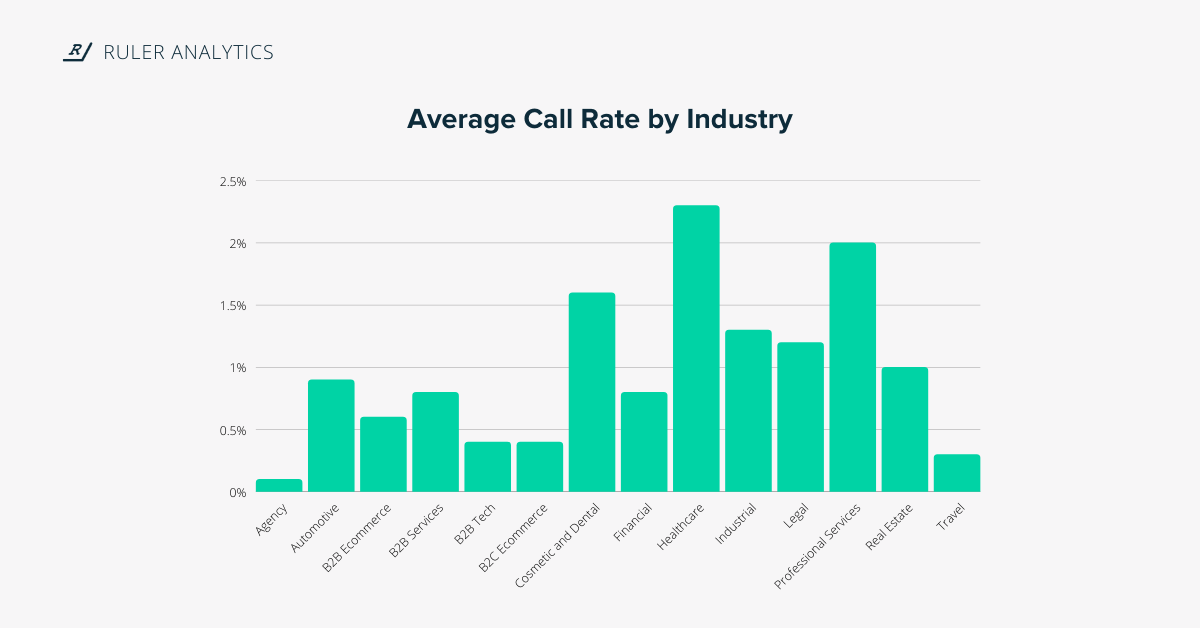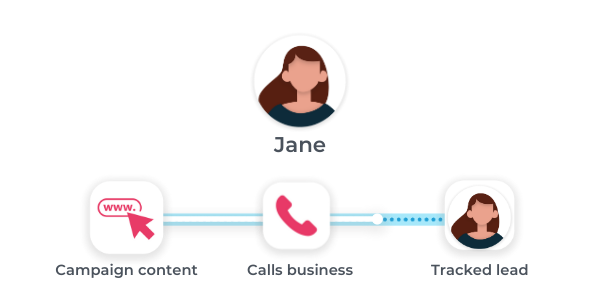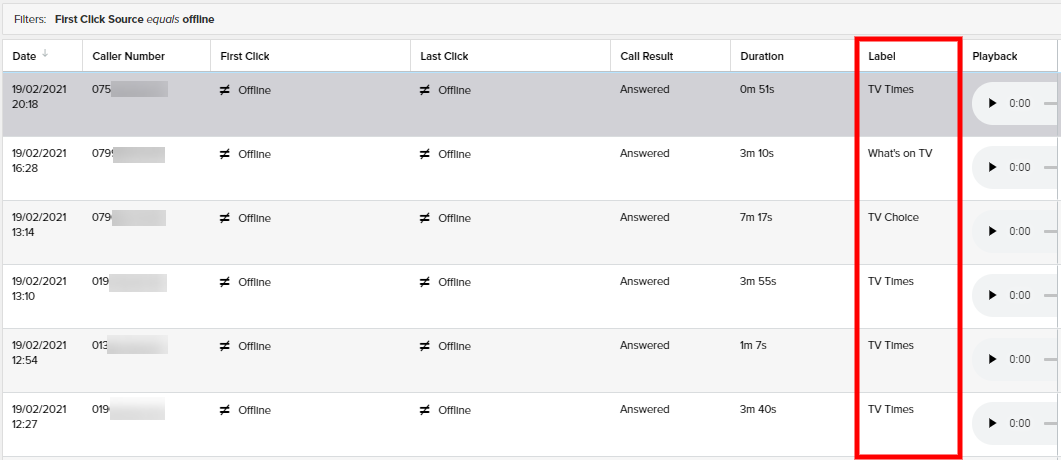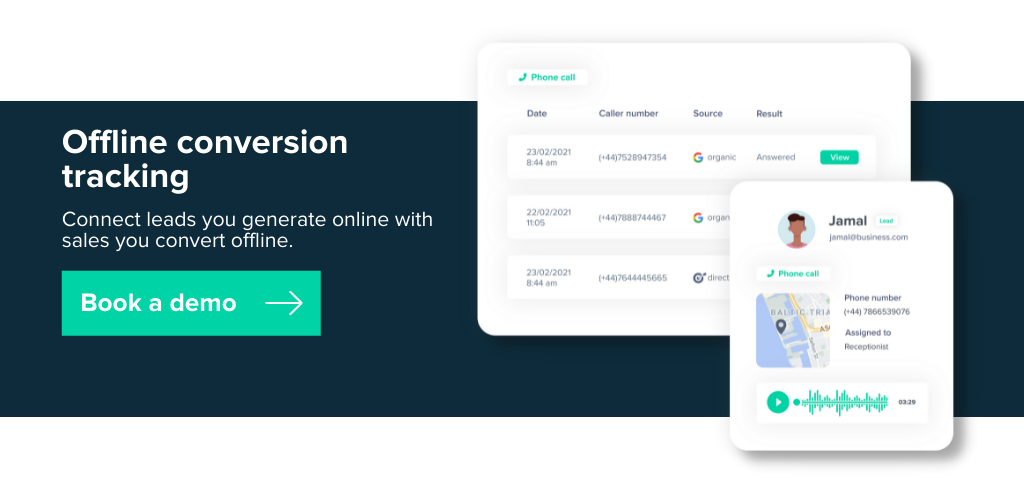Quite often, digital advertising drives actions away from the web, such as a telephone call or in-store visit, that leads to a sale offline. Integrating your online marketing with offline activity is key when it comes to making budgetary decisions that can make—or break—your business.
Despite the growth of modern technology, many consumers are still embracing traditional forms of communication, such as face-to-face conversations and telephone calls, to converse with brands and make important purchasing decisions.
In fact, over 50% of marketers told us that phone calls are a primary source of leads and sales.
By integrating online marketing with offline activity, you can track which channels generate the most profitable interactions and allocate budget into the sources that generate offline leads with a higher propensity to convert into a sale.
For this article, we’ll discuss:
💡 Pro Tip
Do you know which digital marketing channels are driving your most valuable offline sales? If the answer was no, download our eBook on offline conversion tracking to connect the leads you generate online with the sales your convert in the real world.
Download the offline conversion tracking eBook
Consumer empowerment has completely transformed how businesses promote products and services to prospective buyers.
In a new technological era, individuals have passage to all the business and product information they could ever need at the end of their fingertips—at any time, anyplace.
Long gone are the days where sales reps had complete control over the sales cycle.
Research from CSO Insights suggests that 70% of buyers fully define their needs on their own before engaging with a sales representative, and 44% identify specific solutions before reaching out to a seller.
Today’s consumers are more informed, digitally-driven, and are searching for products and services, browsing reviews and comparing prices independently to qualify purchasing decisions before making a phone call or in-store visit.
With an increasing number of consumers researching online and converting offline, marketers are under extreme pressure to deliver on multi-channel customer experiences to keep up with buyer expectations.
By integrating online marketing activity with offline interactions, marketers can gain full visibility into the customer journey, to maximise the effectiveness of their advertising efforts and drive more meaningful results.
Related: Guide to customer journey stages and how to track them
So, with other means of communication available, such as email, instant messaging and social media, why are prospective buyers still using the phone to enquire about products and services?
Below is a bar graph from our conversion benchmark report that illustrates the average call rate across fourteen industries.

Statistics indicate that people think and behave differently when it comes to high ticket price items and services such as cars, real estate and cosmetic procedures.
Most often, big-ticket buyers will require reassurance or intricate details that can lead to lengthy, complex discussions.
A phone call allows buyers to talk about their requirements more confidently and get answers to questions that they wouldn’t usually get from a web form.
Also, consumers prefer to speak with a business directly when communicating sensitive information.
For example, discussions between patients and healthcare services are often complicated as usually involve the exchange of personal medical information.
With that being the case, phone calls are a better fit as they allow patients to discuss their health issues with complete ease and confidentiality.
💡 Pro Tip
Get a copy of the conversion benchmark to see which industries drive the highest conversion rates. Compare your inbound call activity against the competition to see where you’re going right—or wrong.
Download the conversion rate benchmark report
Coordinating online and offline marketing touchpoints can be challenging for many reasons.
Related: Complete guide to marketing touchpoints
As a result, the importance of connecting digital activity with offline data often gets overshadowed—or worse—ignored.
Let’s take a look at the two main reasons that stand in the way of online and offline measurement efficiency.
Buyers are weaving through online and offline channels to compare prices, functionality and competitive solutions.
As a result, the customer journey lasts, in many cases, weeks, months and sometimes years.
Long sales cycles make it problematic for businesses who want to measure the impact of their digital advertising on offline interactions.
Related: What is a sales cycles and tips to close deals faster
Research indicates that 64% of brands are handling online and offline data in separate platforms.
When used correctly, Google Analytics can provide marketers with valuable insight into consumer behaviour and demographic information.
However, Google Analytics falls short as it tells marketers absolutely nothing about their leads who have converted online or over the phone.
Whereas sales teams have vast amounts of offline data stored in the CRM but lack the technology and insight to connect customers with their digital footprint.
Related: How Ruler Analytics sends offline conversion data to Google Analytics
Using the following methods you can connect the dots between your online marketing and offline activities.
Promo codes are another solution to help track your offline marketing campaigns and is commonly used to connect print advertising with online traffic.
You’ve most likely seen these Promo codes in magazines and newspapers for example, “use promo code RULER20 for 20% off your first month”.
You can use custom variables in Google Analytics to track your offline promo codes.
Custom landing pages are a popular choice to help track offline marketing.
The idea is to create and promote a custom landing page to attract visitors engaging with your offline campaigns, which then allows you to keep track of any conversions that take place on that page.
Before you go about this, there are a few things you need to keep in mind to get the most out of your measurement.
If you decide to use multiple custom landing pages, then make sure to keep a log of your URLs.
For example, when they were created and why you created them, and add a NoIndex meta tag to prevent other forms of traffic coming to your landing pages.
If you promote your business online and generate a lot of leads over the phone, then you should be using call tracking.
Simply put, call tracking works by overriding the phone number on your website and replacing it with a unique phone number for each individual visitor. When the number is called the lead is sent to your original number.
Basic call tracking can help you identify which channels are driving the most phone conversions.
Although, with a marketing attribution tool like Ruler, you can go beyond call conversions and identify which marketing sources drive the most offline revenue and long-term value.
Related: How does Ruler’s phone call tracking work?

Ruler’s call tracking and multi-touch attribution technology enables marketers to attribute sales revenue to their marketing activity and understand the steps customers make, online and offline, in the decision making process.
Within the Ruler dashboard, you can apply labels to your offline numbers, which looks something like this:

By closing the loop between sales revenue and marketing activity, Ruler provides a single point of truth to identify which marketing sources are driving offline revenue, allowing organisations to make meaningful decisions to optimise marketing spend.
Related: How Ruler attributes revenue to your marketing
Ruler Analytics can sync data back to Google Analytics, your CRM or paid media solutions to give you insight where you need it most.
It’s also worth noting that Ruler can also provide extra insight into the marketing source that generates visits or conversions to your site using value track parameters and UTMs, both online and offline.
For instance, let’s say you have an offline print campaign.
You use a custom URL with UTM parameters to identify the source of your visitors.
One person types in your custom URL, they navigate around the site, leave and later return via a PPC ad to convert into a lead.
With Ruler, you could track the offline visit to your website as well as any subsequent visits to accurately match conversion data with their unique touchpoints over offline and online channels.
Using this information, you can compare the success of your offline campaigns and make data-driven decisions to enhance your marketing activities.
Connecting online marketing data with offline activity provides marketers with complete visibility into the customer journey, allowing them to make smarter budgetary decisions to drive more meaningful outcomes.
Book a demo with the sales team and learn more about the possibilities Ruler’s offline tracking solution.

This article was originally posted in February 2021 and was last updated on 27th April 2022 for freshness.